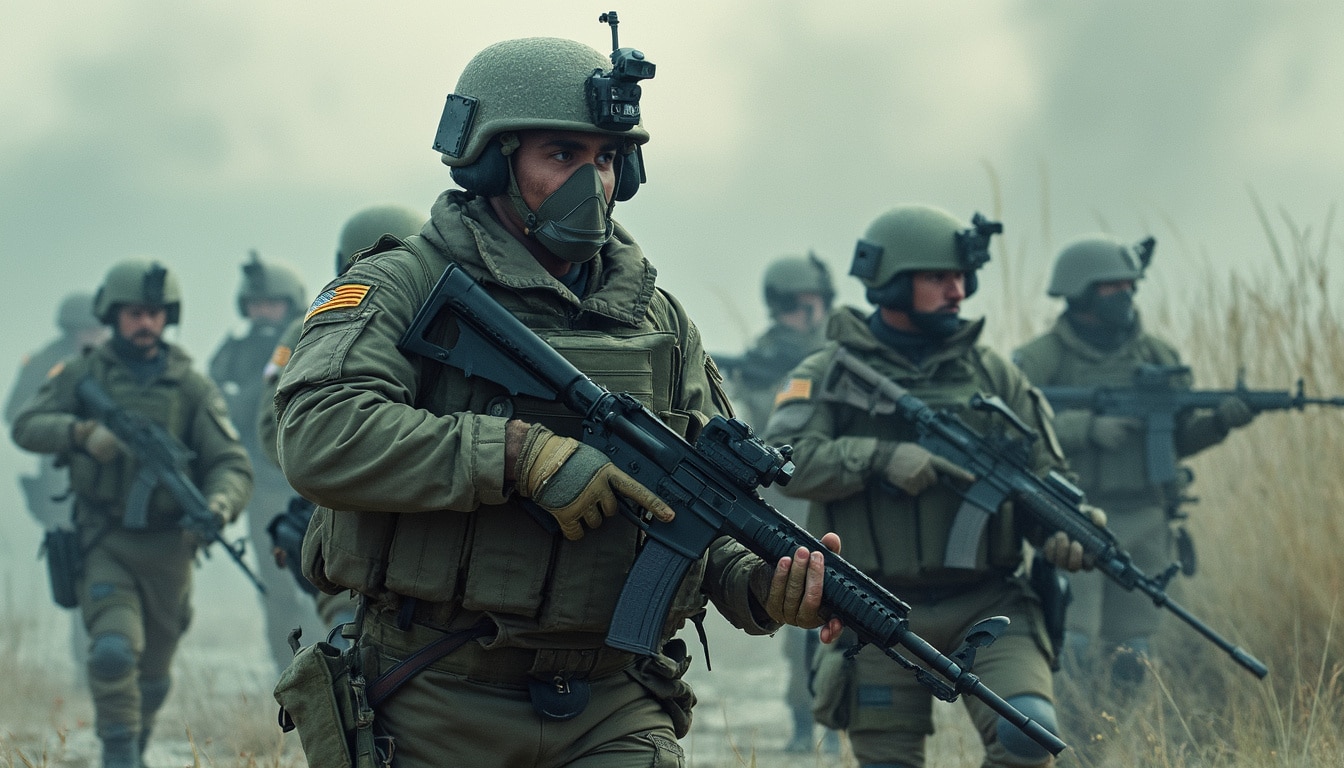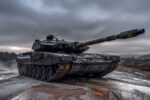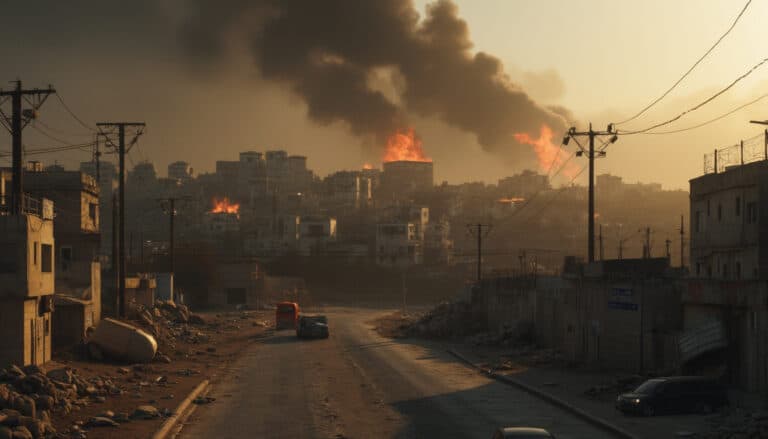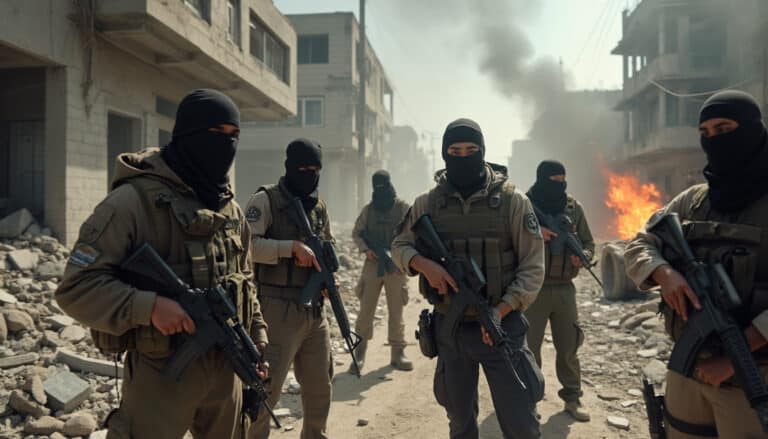A major turning point shakes the south of Syria.The dissident armed forces announce their integration into the government.This decision marks a crucial step towards national stability.
The dominant armed group in the region, led by the defector officer Ahmed al-Awdeh, has decided to dissolve its military formation. The Eighth Brigade, recognized as the most influential faction in southern Syria, is now placing its weapons and personnel at the service of the Ministry of Defense. According to Colonel Mohamed al-Hourani, this initiative aims to strengthen national unity and promote security in the region. This move comes after days of tensions between the brigade’s forces and the new authorities in place. The integration occurs in a context of strengthening state institutions and cooperating with various minorities, notably the Kurds and the Druze. This evolution could pave the way for lasting reconciliation and better governance in a country long torn apart by conflict.

“`html
Table des matières
In April 2025, a major announcement shook the Syrian political landscape when the Eighth Brigade, an influential armed faction from the south of Syria, declared its dissolution and integration into government forces. This decision, led by the defector officer Ahmed al-Awdeh, marks a significant turning point in the dynamics of the Syrian conflict. The Eighth Brigade, recognized for its predominant role within the Southern Operations Room, has long been a key force in the fight against Bashar al-Assad’s regime.
The integration of this faction into government forces is seen as a strong gesture in favor of national unity and stabilization of the country. By laying down their arms and placing their personnel at the service of the Syrian Ministry of Defense, the brigade’s members show a willingness to support the state’s sovereignty and contribute to national security. This move comes after days of tensions between the Eighth Brigade and the new Syrian authorities, reflecting ongoing efforts to consolidate central power while integrating various local armed forces.
The decision to dissolve the Eighth Brigade and integrate into government forces is motivated by several key factors. First, there is a deep desire to promote national unity in a country long torn by civil war. By joining the official armed forces, the brigade hopes to contribute to better coordination and increased effectiveness in peacekeeping operations.
Furthermore, this integration helps to enhance the legitimacy of the Syrian government by incorporating experienced and well-equipped military elements. With a history of collaboration within the Southern Operations Room, cooperation between different armed factions and the central government is essential to avoid future fragmentation and ensure stable governance. This effort is also supported by international initiatives aimed at encouraging peace and reconciliation in the region.
Lastly, the decision may also be influenced by external factors, such as ongoing negotiations with other armed groups, including representatives of the Druze minority in southern Syria. These talks are essential for peacefully integrating various military actors into a unified national structure, thus contributing to ending hostilities and rebuilding the country.
The integration of the Eighth Brigade into government forces has significant repercussions on internal security in Syria. By aligning the dissident armed forces with the central government, a reduction in internal conflicts and a consolidation of national military capabilities are expected. This unification also allows for better allocation of resources and military assets, optimizing efforts to maintain peace and stability in different regions of the country.
Additionally, this move strengthens the Syrian government’s position against external threats and residual rebel groups. By integrating experienced and well-organized fighters like those from the Eighth Brigade, government forces benefit from expertise and deep knowledge of the terrain, which are essential for countering insurgent activities. This synergy also enhances the capacity for rapid response to security incidents and acts of violence, thus increasing the country’s resilience to future challenges.
Meanwhile, this integration promotes cooperation with international partners who support the Syrian government in its stabilization efforts. This may include collaborations with peacekeeping agencies and humanitarian organizations, thus facilitating a more coordinated and effective approach to addressing humanitarian and reconstruction needs.
On the international stage, the integration of the Eighth Brigade into the Syrian government forces has several major implications. Firstly, it sends a strong signal to allies and adversaries of the Syrian regime, indicating a willingness to centralize military power and reduce internal fragmentation. This decision may strengthen Syria’s diplomatic position by presenting a unified and stable front to the international community.
Additionally, this integration can facilitate better collaboration with international partners, particularly in the fields of security and reconstruction. By unifying the armed forces, the Syrian government can negotiate more effectively peace agreements and strategic partnerships, potentially attracting increased support in terms of military and economic assistance. This consolidation may also pave the way for more active Syrian participation in regional security and cooperation initiatives.
Finally, this move could positively influence international perceptions of stability in Syria, fostering an image of progress and reconciliation. This might encourage further foreign investment and economic cooperation, essential for the country’s reconstruction after years of devastating conflict.
The integration of the Eighth Brigade marks a crucial step in redefining the Syrian armed forces. As the central government consolidates its control over various armed groups, increased modernization and professionalization of military forces can be expected. This unification paves the way for a more coherent and effective military structure, capable of responding to current and future challenges with a unified strategy.
The future of the Syrian armed forces also depends on their ability to adapt to new geopolitical realities and the demands of national security. This includes integrating modern technologies, ongoing training of soldiers, and improving military infrastructure. By collaborating with international allies and adopting advanced military practices, the Syrian armed forces can enhance their operational effectiveness and resilience to threats.
Furthermore, the success of this integration will also depend on the government’s ability to maintain internal cohesion and manage the diverse interests of different armed groups. Inclusive and transparent governance will be essential to ensure that all factions feel represented and integrated into the new military order, thus avoiding fractures and internal conflicts that could threaten the country’s stability.
Ahmed al-Awdeh, the defector officer who led the Eighth Brigade, plays a central role in this historic transition. As a respected and experienced leader, al-Awdeh has navigated the political and military complexities to orchestrate the integration of his faction into government forces. His leadership has been crucial in ensuring that this transition occurs in an orderly and peaceful manner, thus minimizing the risks of tension and violence.
Al-Awdeh also embodies the bridge between the dissident armed forces and the central government, facilitating communication and cooperation between the various stakeholders. His ability to gain the trust of both sides has been pivotal in overcoming the initial obstacles and resistance to integration. Moreover, his commitment to national stability and sovereignty reinforces the legitimacy of the approach and inspires other factions to follow his example.
Despite promising advances, several challenges remain to ensure the successful integration of the dissident armed forces into Syrian government structures. One of the main challenges is to maintain cohesion and unity among the integrated troops, which may have diverse loyalties and backgrounds. It is essential to establish training and reorientation programs to harmonize military practices and values within the unified forces.
Another major challenge is managing power balances between the different armed factions and the central government. Ensuring an equitable distribution of command positions and resources is crucial to avoid tensions and internal rivalries that could compromise operational effectiveness and long-term stability.
Finally, the reconstruction of military infrastructures and modernization of equipment requires substantial investments and strategic planning. Collaborating with international partners to secure the necessary technical and financial assistance is a key element to overcome these obstacles and ensure sustainable and effective integration.
The integration of the Eighth Brigade into Syrian government forces has notable repercussions on the perception and relations of the international community with Syria. This initiative is seen as a positive step towards stabilizing the country, reinforcing the credibility of the Syrian government on the international stage. Traditional allies and new partners may perceive this integration as a sign of political maturity and willingness to cooperate for the common good.
Additionally, this move can facilitate access to more substantial international aid, whether humanitarian, military, or economic. By presenting a unified and professional armed force, Syria can attract further external support for its reconstruction and development efforts. This also includes a better position in international negotiations and a greater capacity to actively participate in regional security initiatives.
Moreover, this integration may encourage other armed factions to follow the same path, creating a domino effect favorable to peace and national unity. The international community, particularly peacekeeping organizations and humanitarian agencies, can play a key role in supporting this transition through training programs, funding, and technical resources.
The successful integration of the Eighth Brigade into Syrian government forces offers several valuable lessons for resolving other armed conflicts around the world. Firstly, it demonstrates the importance of strong and committed leadership capable of navigating the political and military complexities to achieve a peaceful solution. Ahmed al-Awdeh’s role illustrates how a respected leader can facilitate transition and inspire trust among various stakeholders.
Secondly, this integration highlights the importance of political will and cooperation between different armed factions and the central government. An inclusive approach that takes into account the interests and concerns of all involved actors is essential to ensure a smooth and lasting transition. Negotiations and compromises are often necessary to overcome obstacles and reach an acceptable solution for all parties.
Finally, the Syrian experience shows that international support, whether financial, technical, or diplomatic, plays a crucial role in the success of reconciliation and reconstruction processes. Global initiatives aimed at promoting peace and local stability must be backed by adequate resources and close cooperation with local actors to ensure their effectiveness and relevance.
To better understand the issues related to the integration of armed factions into government forces, several resources can be consulted. For example, the article on urban issues towards a new era of warfare in urban settings offers an in-depth perspective on modern challenges of armed conflict in urban environments. Additionally, for those interested in military pathways, how to become an air force officer: which training path to choose provides detailed information on available training programs. Finally, to analyze current political dynamics, the article how Trump’s team changed course on bombing the Houthis offers a relevant analysis of recent military and political strategies.
what is a powerful armed faction from the south of Syria
why did the Eighth Brigade decide to integrate into government forces
what are the impacts of this integration on security in Syria
how does this integration affect Syria’s international relations
what are the future prospects for the Syrian armed forces
what role does Ahmed al-Awdeh play in this transition
what challenges must be overcome for successful integration
how does this integration influence the international community
what lessons can be learned from this integration for other conflicts
additional resources for deeper understanding of the subject
“`

























